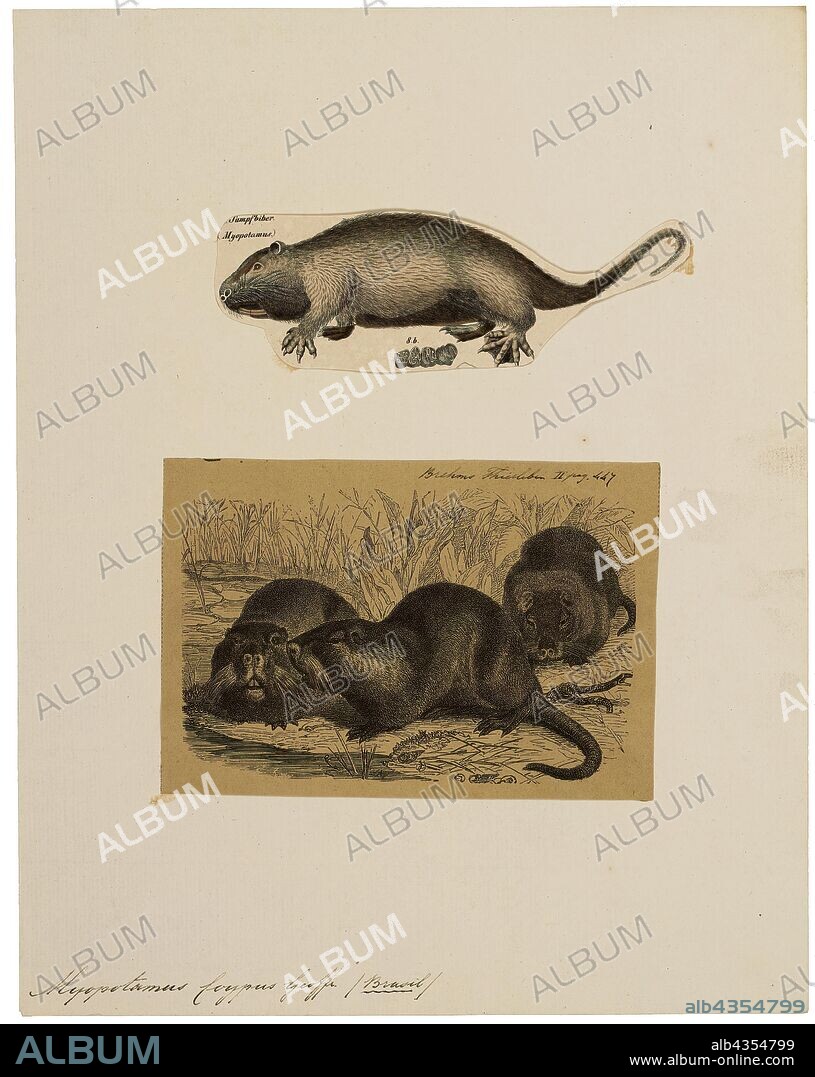alb4354799
Myopotamus coypus, Print, The coypu, also known as the nutria, is a large, herbivorous, semiaquatic rodent. Classified for a long time as the only member of the family Myocastoridae. Myocastor is actually nested within Echimyidae, the family of the spiny rats. The coypu lives in burrows alongside stretches of water, and feeds on river plant stems. Originally native to subtropical and temperate South America, it has since been introduced to North America, Europe, Asia, and Africa, primarily by fur farmers. Although it is still hunted and trapped for its fur in some regions, its destructive burrowing and feeding habits often bring it into conflict with humans, and it is considered an invasive species., 1700-1880.

|
Ajouter à une autre Lightbox |
|
Ajouter à une autre Lightbox |



Avez-vous déjà un compte? S'identifier
Vous n'avez pas de compte ? S'inscrire
Acheter cette image.
Sélectionnez l'usage:

Légende:
Voir la traduction automatique
Myopotamus coypus, Print, The coypu, also known as the nutria, is a large, herbivorous, semiaquatic rodent. Classified for a long time as the only member of the family Myocastoridae. Myocastor is actually nested within Echimyidae, the family of the spiny rats. The coypu lives in burrows alongside stretches of water, and feeds on river plant stems. Originally native to subtropical and temperate South America, it has since been introduced to North America, Europe, Asia, and Africa, primarily by fur farmers. Although it is still hunted and trapped for its fur in some regions, its destructive burrowing and feeding habits often bring it into conflict with humans, and it is considered an invasive species., 1700-1880
Crédit:
Album / quintlox
Autorisations:
Modèle: Non - Propriété: Non
Questions sur les droits?
Questions sur les droits?
Taille de l'image:
4224 x 5310 px | 64.2 MB
Taille d'impression:
35.8 x 45.0 cm | 14.1 x 17.7 in (300 dpi)
Mots clés:
AFRIQUE • ASIE • ASIE, CONTINENT • CONFLICTS • CONFLIT • CONTINENT ASIE • EAU • EMPREINTE • EUROPE • FAMILLE • GENS • LOUTRE • QUATRE ELEMENTS: EAU • RAGONDIN • REGIONS
 Pinterest
Pinterest Twitter
Twitter Facebook
Facebook Copier le lien
Copier le lien Email
Email
